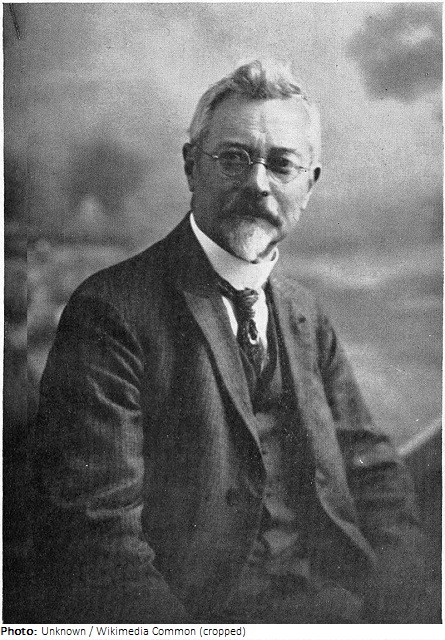Willem Kromhout

Biographical information
| Roles | Referee |
|---|---|
| Sex | Male |
| Full name | Willem•Kromhout |
| Used name | Willem•Kromhout |
| Born | 10 May 1864 in Rotterdam, Zuid-Holland (NED) |
| Died | 21 June 1940 in Voorburg, Zuid-Holland (NED) |
| NOC |  Netherlands Netherlands |
Biography
Willem Kromhout was an architect, restorer, furniture designer, exhibition designer, decorator, and lecturer. He spent his childhood in the former Dutch Indies and from 1874 in Gouda. From 1878 he attended the trade school in The Hague and then worked as a draftsman in architectural offices and regularly supplied drawings for the Bouwkundig Weekblad. At the same time, he attended evening classes at the Royal Academy of Fine Arts in Den Haag.
From 1885 Kromhout continued to work as a draftsman, first in Antwerp, where he also attended courses at the Academy of Fine Arts, and then in Amsterdam. There he worked as an independent architect for 20 years from 1890, becoming a member and later chairman of the architecture association “Architectura et Amicitia” and joining the Freemasons. In addition to his work as an architect, he taught at various technical arts and crafts schools.
After taking up teaching at the Academy of Fine Arts and Technical Sciences in Rotterdam, Kromhout settled there. He participated in numerous competitions and designed numerous industrial and public buildings. In 1920, he was a co-founder of the architectural group “Opbouw”. From 1925 he lived in Voorburg, but continued to work mainly in Rotterdam.
Kromhout’s masterpiece is the Hotel-Restaurant American in Amsterdam, which he built in 1899-1902 together with Herman Gerard Jansen (1859-1934). The design was inspired by Oriental architectural influences. Kromhout also designed street and canal decorations, e.g. for the coronation of Queen Wilhelmina in 1898. He also became known as a designer of rooms and pavilions for large industrial exhibitions. His work as a restorer, for example on the Grote Kerk in Gouda, showed him as an expert on historical architectural styles. Many of his buildings in Rotterdam were destroyed during World War II. He was considered a pioneer and promoter of modern architecture and, as an Art Nouveau architect, marked the beginning of the development of modern architecture in the Netherlands.
Referee
| Games | Sport (Discipline) / Event | NOC / Team | Phase | Unit | Role | As | |
|---|---|---|---|---|---|---|---|
| 1928 Summer Olympics | Art Competitions |  NED NED |
Willem Kromhout | ||||
| Architecture, Designs For Town Planning, Open (Olympic) | Final Standings | Judge | |||||
| Architecture, Architectural Designs, Open (Olympic) | Final Standings | Judge |